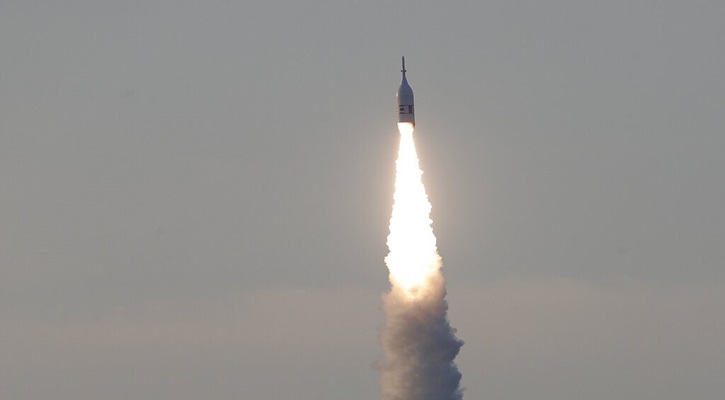Rolle im Portfolio
The iShares DivDAX (DE) ETF provides exposure to the 15 stocks with the highest dividend yields that belong to the DAX 30 Index. High correlations to international stock markets make this fund’s use as a diversifier within a broader equity allocation limited.
Given the size and diversification of the German economy, the ETF can be considered as part of a core holding in a well diversified portfolio. For tactical purposes, the fund is also suitable for investors with a strong view on German equities.
Also, an investment might be of interest for investors seeking income as the index’s current dividend yield is 2.96% as of this writing.
Fundamentale Analyse
Dividends play an important role in an equity portfolio as they account for a large portion of long-term stock returns. Over the last decade, the DAX 30 Total Return Index outperformed the DAX 30 Price Return Index by about 3.5% per annum. The difference in return can be fully explained by dividends.
During the financial crisis many firms which were traditionally big dividend payers—in particular banks—had to cut their payouts and saw their share prices fall as investors fled to safe-havens. This partly explains the index’s underperformance 2008. The DivDAX Index lost 44.8% of its value during this year, compared to -40.4% for the DAX Index. However, cost-cutting exercises left many companies with huge cash reserves which are now being returned to investors.
The DivDAX is not the best proxy for the German domestic economy. While big companies like BWM or Bayer generate most revenue abroad, more relevant companies to gauge the health of German domestic demand, such as Aldi or Sparkassen, are not listed on the DivDAX.
Due to this international focus, DivDAX companies are highly dependent on the global economic health and the currency exchange. A strong Euro versus currencies of Germany’s main trading partners outside the Eurozone would negatively impact exports, thus reducing revenue and weighing on DivDAX valuations.
Closer to home, developments in the still slow-growing Eurozone are also important. In most eurozone countries, inflation is running well below the ECB’s 2% target. A deflationary spiral would have a negative impact on the economy, as companies would stop investing and hiring and consumer would postpone bigger investments. This would also hurt Germany’s export growth.
Overall, the prospects for some of the DivDAX key represented sectors look encouraging. For example, the prospects for German carmakers – the largest sector in the DivDAX, but the country’s most important economic sector – look rather positive. Carmakers’ stock prices have benefited from strong sales growth in emerging markets. And now that the Chinese market cools off and the Ukraine crisis has dampened the outlook for Russia, car sales in Europe are rising steadily to offset, and now take second place behind Asia-Pac in terms of sales growth.
German carmakers represent about a third of all passenger cars manufactured and over a quarter of all new registration in Europe. The sector’s technological strength, combined with its innovative business network, perfectly position it to benefit from the new trend towards improved engine energy efficiency and developing alternative drive technology.
Meanwhile, companies in the chemical sector – the second largest sector in the DivDAX – generally operate in a highly cyclical environment and are subject to fluctuating commodity prices. Germany is the world’s largest chemical exporter, including DivDAX heavyweights like Bayer and BASF. Germany represents around 10% of global chemical exports. The trend away from mass commodity or bulk chemistry towards fine & speciality chemical – including the development of “new” raw materials - offers great opportunities for Europe’s technology-driven and chemical industry, with Germany’s chemical companies in particularly expected to benefit.
Indexkonstruktion
The DivDAX Index offers exposure to the 15 stocks with the highest dividend yields that belong to the DAX 30 Index. The DAX Index is a free float market capitalisation weighted index, representing the 30 largest and most traded German stocks listed on the Frankfurt Stock Exchange. To be eligible, constituents have to be either domiciled in Germany, or a minimum of 33% of their trading turnover is on the Frankfurt Stock Exchange. Moreover, component stocks must be domiciled in an EU or EFTA country. Each constituent is capped at 10% of the index’s total value. The index is reviewed annually with narrower reviews conducted quarterly. As of writing, the DivDAX Index is fairly top heavy with the top five stocks representing 50% of the index’s value. The largest single issuer is BASF (10 % of the index’s value), followed by Allianz (10%) and Daimler (10%). The biggest sector exposure is automobiles & parts (27%), followed by chemicals (21%) and insurance (16%).
Fondskonstruktion
The iShares DivDAX (DE) ETF uses physical replication to track the DivDAX Index. The fund intends to invest in a portfolio of the 15 stocks with the highest dividend yield within the DAX Index. iShares engages in securities lending within this fund to improve its performance. The gross revenues generated from this activity are split 62.5/37.5 between the fund and the lending agent BlackRock, whereby BlackRock covers the costs involved. The fund lent out 0.38% on average over the 12 months period ending March 2014 and received net lending returns of 0.01%. To protect the fund from a borrower’s default, BlackRock takes collateral greater than the loan value. Collateral levels vary from 102.5% to 112% of the value of securities on loan, depending on the assets provided by the borrower as collateral. Additional counterparty risk mitigation measures include borrower default indemnification. Specifically, BlackRock commits to replace the securities that a borrower would fail to return. The indemnification arrangement is subject to changes, and in some cases without notice. Finally, BlackRock limits the amount of assets that can be lent out by this ETF at 50%. Cash received as dividends from the underlying stocks is held in the fund’s income account until it is distributed to fund holders. Distributions are made on a quarterly basis. This dividend treatment can potentially create a drag on returns in upward trending markets as dividends are not reinvested into the fund. In practice this cuts both ways. It could also result in outperformance if the benchmark falls in the interim period.
Gebühren
The fund levies a total expense ratio of 0.31%. This lies at the upper of the range of ETFs tracking German equities. Other potential costs associated with holding this fund which are not included in the TER include rebalancing costs, bid-ask spreads and brokerage fees.
Alternativen
As of writing, only ComStage offers an ETF tracking the DivDAX Index. ComStage uses synthetic replication and levies a TER of 0.25%.
Another alternative is the Deka’s DAXplus Maximum Dividend ETF which also tracks an index that provides exposure to some of the highest yielding stocks in Germany. The index is comprised of 20 stocks from a universe of the 110 largest stocks trading in Frankfurt. The fund also uses physical replication, levies a total expense ratio of 0.30% and given its relative breadth, offers a slightly better degree of diversification as compared to the iShares fund.
Investors looking for broader exposure to German equities will find several ETFs tracking the DAX Index. The biggest ETFs in terms of total assets under management are the iShares DAX (DE) ETF, which uses physical replication and the db x-trackers DAX ETF, also using physical replication since Dec 2012.
Die in diesem Artikel enthaltenen Informationen dienen ausschließlich zu Bildungs- und Informationszwecken. Sie sind weder als Aufforderung noch als Anreiz zum Kauf oder Verkauf eines Wertpapiers oder Finanzinstruments zu verstehen. Die in diesem Artikel enthaltenen Informationen sollten nicht als alleinige Quelle für Anlageentscheidungen verwendet werden.

















